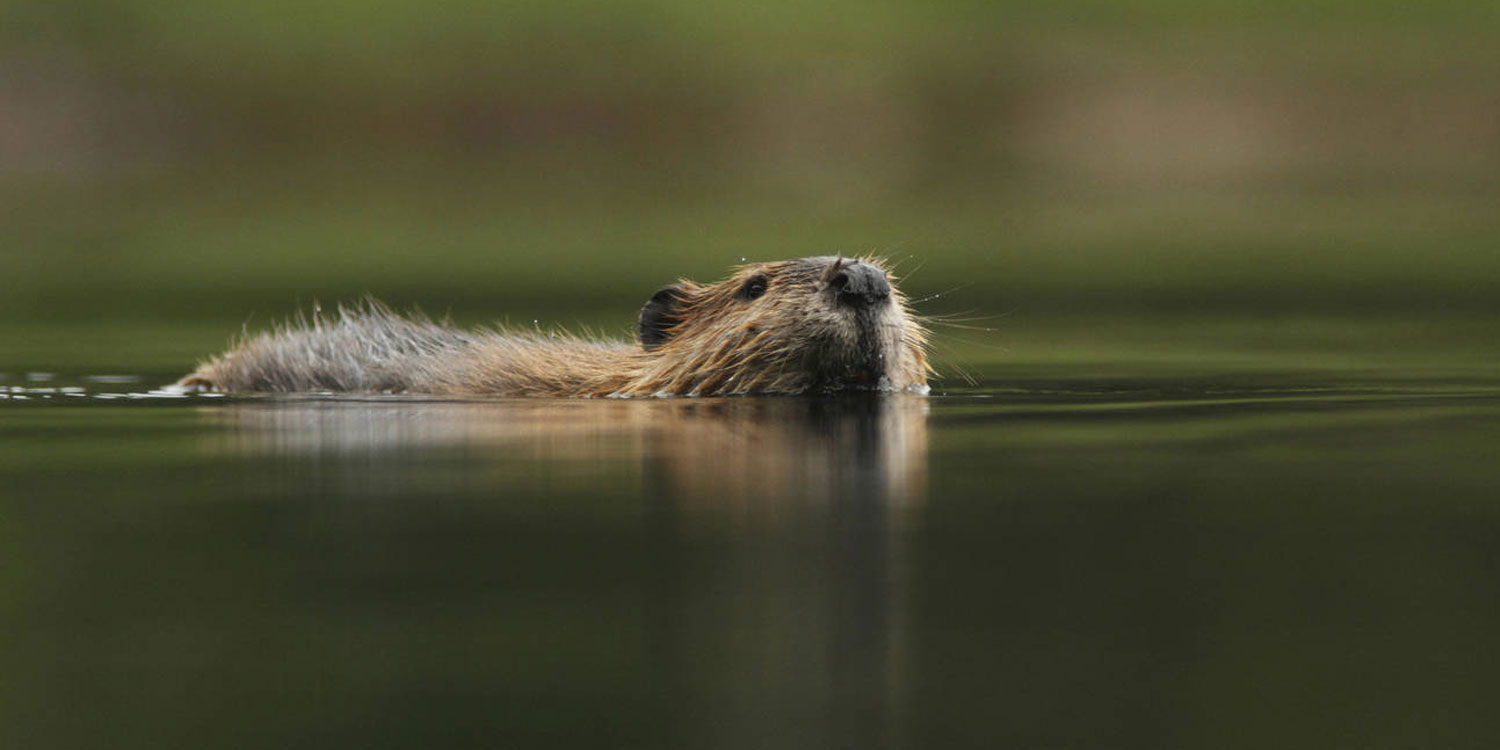WSC’s Oregon Coast coho recovery work gets a foothold on the Upper Nehalem River.
This summer, WSC partners completed a flurry of coho salmon habitat restoration work in the headwaters of the Nehalem watershed. The work is part of WSC and partner’s $4.6 million coastwide coho habitat restoration program, aimed at improving the home streams for the threatened Oregon Coast coho. Beavers were at the heart of this summer’s work. Twenty-seven beaver dam analogs were constructed in four high priority reaches for coho, steelhead and cutthroat trout. Beaver found their way in days to the newly built analogs, which are like footholds for the beaver to build out into full-fledged dams using their advanced engineering skills.
Beavers and coho restoration go hand and hand. According to Wild Salmon Center’s Coast Director Mark Trenholm “Bringing beaver back to selected locations in the upper Nehalem will help restore some key tributaries to better reflect historic conditions that once made the Nehalem a coho stronghold.” By damming up small tributaries, beavers provide shallow, cold water pools where coho can find food and cover from predators. These types of off-channel habitats are essential for juvenile coho to survive and grow during the year they spend in freshwater before migrating downstream to the ocean.
Wild Salmon Center is investing in coho restoration because the health of Oregon’s coast coho populations is a vital indicator of the health of our coastal watersheds. These fish are threatened after 150 years of land use on the coast that has altered watersheds and degraded critical coho habitats. Loss of watershed health has impacted local communities through increased flooding, impaired water quality, and less economic activity from commercial and recreational fishing. We are facilitating extensive watershed restoration on Oregon’s north coast—a key step for coho recovery. This partnership is part of a broader coastwide coho recovery strategy involving several state, federal, and nonprofit partners.
This summer’s restoration work is the result of several years of cooperative conservation planning by a local partnership convened by the Upper and Lower Nehalem Watershed Councils and facilitated by Wild Salmon Center. The local Nehalem team relied on science and local on-the-ground expertise to determine a suite of watershed restoration strategies and to pick the specific places where new projects will have the greatest benefit for coho. Restoration work will ramp up next year with $500,000 going to work in the Nehalem watershed. “We are creating the foundation to let nature take its course,” says Maggie Peyton, Upper Nehalem Watershed Council’s co-founder and Executive Director. “We have our work cut out for us, and the beaver need to be a part of our workforce.”
“We are creating the foundation to let nature take its course. ” — Maggie Peyton, Upper Nehalem Watershed Council co-founder and Executive Director.
Partners include: Upper Nehalem Watershed Council, National Oceanic and Atmospheric Administration Restoration Center, Wild Salmon Center, National Fish and Wildlife Foundation, Oregon Watershed Enhancement Board, Oregon Department of Fish and Wildlife, and Bio-Surveys. Construction took place primarily on public lands managed by the Oregon Department of Forestry. Private landowner Stimson Lumber Company, a locally owned timber company, allowed the construction of large woody debris structures on a section of its timberland and donated wood to the project.
